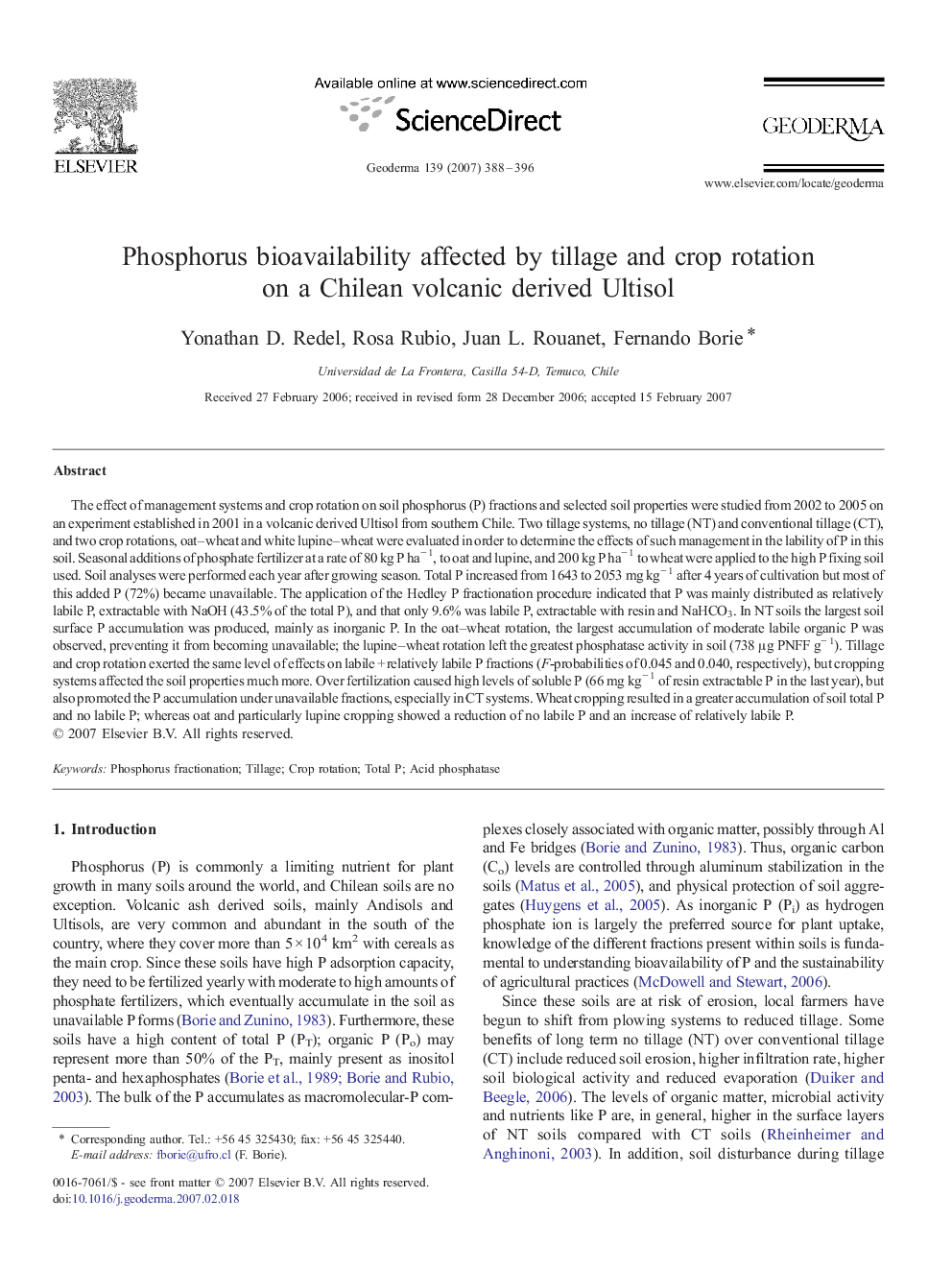| Article ID | Journal | Published Year | Pages | File Type |
|---|---|---|---|---|
| 4575359 | Geoderma | 2007 | 9 Pages |
The effect of management systems and crop rotation on soil phosphorus (P) fractions and selected soil properties were studied from 2002 to 2005 on an experiment established in 2001 in a volcanic derived Ultisol from southern Chile. Two tillage systems, no tillage (NT) and conventional tillage (CT), and two crop rotations, oat–wheat and white lupine–wheat were evaluated in order to determine the effects of such management in the lability of P in this soil. Seasonal additions of phosphate fertilizer at a rate of 80 kg P ha− 1, to oat and lupine, and 200 kg P ha− 1 to wheat were applied to the high P fixing soil used. Soil analyses were performed each year after growing season. Total P increased from 1643 to 2053 mg kg− 1 after 4 years of cultivation but most of this added P (72%) became unavailable. The application of the Hedley P fractionation procedure indicated that P was mainly distributed as relatively labile P, extractable with NaOH (43.5% of the total P), and that only 9.6% was labile P, extractable with resin and NaHCO3. In NT soils the largest soil surface P accumulation was produced, mainly as inorganic P. In the oat–wheat rotation, the largest accumulation of moderate labile organic P was observed, preventing it from becoming unavailable; the lupine–wheat rotation left the greatest phosphatase activity in soil (738 μg PNFF g− 1). Tillage and crop rotation exerted the same level of effects on labile + relatively labile P fractions (F-probabilities of 0.045 and 0.040, respectively), but cropping systems affected the soil properties much more. Over fertilization caused high levels of soluble P (66 mg kg− 1 of resin extractable P in the last year), but also promoted the P accumulation under unavailable fractions, especially in CT systems. Wheat cropping resulted in a greater accumulation of soil total P and no labile P; whereas oat and particularly lupine cropping showed a reduction of no labile P and an increase of relatively labile P.
